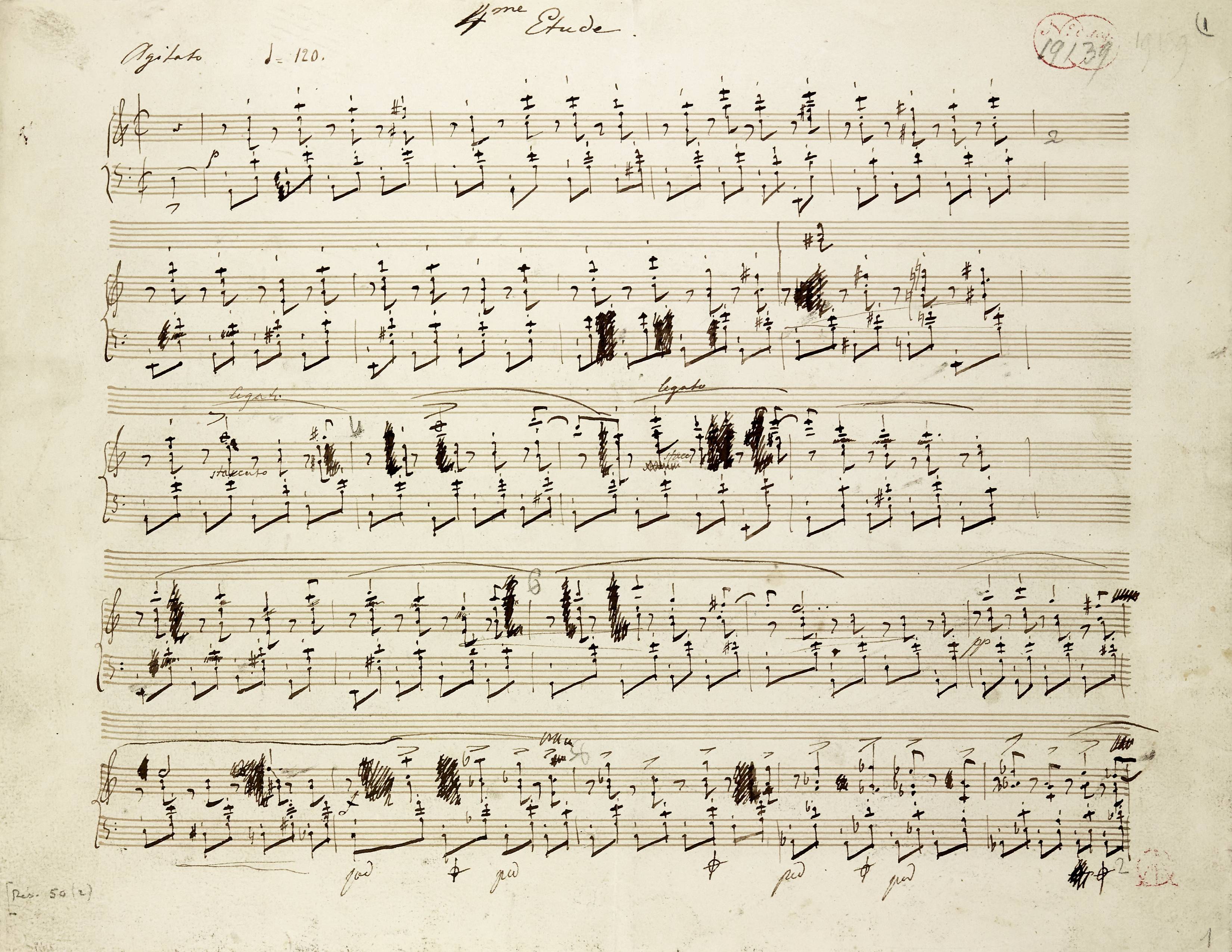



It is unclear whether taking the decision to indicate articulation of the R.H. with the help of verbal indications, Chopin wanted to resign from the previously written staccato signs. Beginning from bar 11, Chopin deleted them in A, so that the fact of leaving them in bars 9-10 proves, according to us, an unfinished correction due to distraction. Hence our suggestion of the main text. However, Chopin could have left double indications (with words and signs) at the beginning of the new section on purpose. Taking into account visible inaccuracies resulting from graphical difficulties, it is the notation of GE2 (→GE3) that is the version which expresses this intention best. The version of FE and EE can also pretend to be authentic (accepted by Chopin).
Compare the passage in the sources »
category imprint: Interpretations within context; Differences between sources; Editorial revisions; Corrections & alterations
issues: Inaccuracies in FE, GE revisions, Wedges, Inaccuracies in FC
notation: Articulation, Accents, Hairpins







